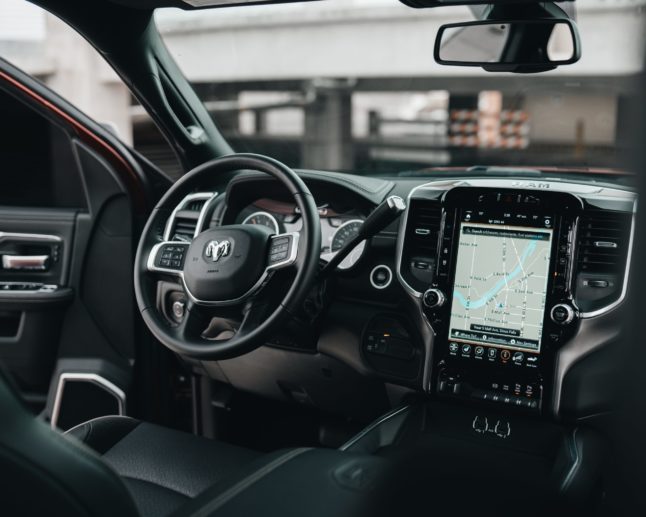
The automobile industry is a field of constant innovation. Engineers and manufacturers are always looking forward, committed to improving the driving experience through clever design methods and implementing the latest technology.

The latest and fastest growing trend in the industry is the autonomous vehicle. These are like something straight from a science fiction film, with many experts predicting they are set to turn the industry on its head. Technology advances are expected to influence all manner of things. For example, how will they influence traffic? And how would they affect someone looking to get car insurance with a bad driving record? Let’s take a look at how the market is expected to react to developments in autonomous driving technology.
What are Autonomous Vehicles?
Put simply, autonomous vehicles are vehicles that can operate with no human input. However, it’s not just a case of a car driving itself around. While this is theoretically possible, there are degrees to autonomy that are important to define.
The Society of Automotive Engineers has categorized autonomy into six distinct levels. Cars that have no autonomy at all and are operated completely manually are at level 0, from there each level defines increasing levels of autonomy, from cruise control to advanced driver assistance systems (ADAS), to environment detection, all the way to level 5, which is for cars that are fully autonomous, being able to drive and perform all functions without the need for any human input or supervision.
Autonomous vehicles offer a range of safety benefits, they can assess dangerous situations quickly and act independently to prevent accidents. They also provide greater comfort and convenience, alleviating the driver of some, or all, responsibilities, leaving them free to kick back and enjoy the ride.
They work by using sophisticated sensors and a network of adaptive analysis tools and machine learning software to evaluate and assess different situations, reacting to these in real time to safely travel to destinations. Cameras and sensors are used to create maps of the car’s immediate surroundings and environment, tracking moving objects such as other vehicles and stationary structures, while light and sonic devices on the side of the car and wheels are used to measure distances. Preprogrammed parameters are used to ensure the vehicle adheres to driving laws and regulations and that it is aware of all roads and routes.
Autonomous vehicles are like nothing ever seen before in the automobile industry. How has this been reflected in the market? Let’s find out.
Car Prices
Autonomous vehicles have been designed to prevent accidents. However, the advanced technology they use to do so means that they can come with a considerable price tag. They come with far more sensors, cameras, and electronic control units than older vehicles, all of which are expensive to design, manufacture, and install, with the consumer bearing the brunt of these costs.
As more and more cars are produced with some degree of autonomy, we can expect to see car prices rise as well. This will be due to manufacturers attempting to offset the increased costs involved with producing such technologically advanced machines.
Autonomous cars can come with significantly higher repair cost than manual counterparts. Self-driving technology and systems are often built into the cars themselves rather than included as optional add-ons. This means that repairing or replacing these systems can involve invasive procedures with equipment having to then be reinstalled and recalibrated before being used again.
Car Insurance
You could be forgiven for thinking that a car that can foresee accidents and take preventative measures to avoid them would be a dream for car insurance companies and would significantly reduce insurance premiums.
However, this is not necessarily the case. The complex equipment and technology required to give cars autonomy can actually see insurance premiums for these kinds of vehicles rise. Sensors and cameras often have to be placed in exposed locations to function properly, which makes them susceptible to damage should an accident or collision occur. Insurance companies are well aware of this and will inflate premiums to cover the cost of having to repair or replace such expensive equipment.
Despite this, drivers of autonomous cars have been proven to file significantly fewer claims than manual car drivers. Studies have demonstrated substantial reductions in the frequency and severity of collision, bodily injury, and property damage claims among autonomous vehicle drivers.
One change we could see as autonomous cars become more commonplace is a shift from blame being placed on the driver to the manufacturer or designer of the car themselves. If an autonomous car that requires no manual input was to be involved in an accident, then the blame would lie with the designers of that system rather than the owner of the car. This could see a rise in no-fault insurance policies to protect manufacturers from damaging and expensive lawsuits.
Conclusion
It’s certainly an exciting time for the automobile industry. Rapid advancements and developments in technology are pushing us ever closer to truly autonomous vehicles that were previously confined to the realms of science fiction. We’re already seeing the market react to autonomous technology and we can expect to see even more changes in the future.
Featured Images: Pixabay and Unsplash
Read more investing news on PressReach.com.Subscribe to the PressReach RSS feeds:- Featured News RSS feed
- Investing News RSS feed
- Daily Press Releases RSS feed
- Trading Tips RSS feed
- Investing Videos RSS feed
Follow PressReach on Twitter
Follow PressReach on TikTok
Follow PressReach on Instagram
Subscribe to us on Youtube





